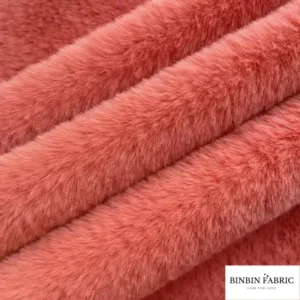Why Does Flannel Fabric Shrink?
Flannel is typically made from cotton, wool, or synthetic fibers, and each fiber type responds differently to washing and drying processes. Let’s break down the main reasons why flannel fabric shrinks:
Natural Fibers: Cotton and wool flannel are prone to shrinking because natural fibers tend to contract when exposed to heat and moisture. Cotton fibers, in particular, are sensitive to high heat, causing the material to shrink more noticeably if washed or dried improperly.
Weave Structure: Flannel’s soft texture is often created through a brushing process, which raises the fibers and makes them more prone to shrinking when exposed to heat. The looser weave of flannel fabrics, compared to tightly woven fabrics, also contributes to its potential for shrinkage.
Improper Care: The most common cause of flannel shrinkage is washing and drying it under high heat. Hot water and a high-temperature dryer can cause the fibers to contract, leading to a tighter weave and reduced size.
How to Prevent Flannel Fabric from Shrinking
While shrinkage is a possibility, you can prevent or minimize it by following these proper care guidelines:
1.Cold Water Washing: Always wash flannel fabric in cold water. Hot water will increase the likelihood of shrinkage, while cold water helps preserve the fabric’s structure and size.
2.Gentle Cycle: Use the gentle cycle on your washing machine to minimize agitation. This helps prevent unnecessary stress on the fibers, reducing the chance of shrinkage.
3.Avoid High Heat: Skip the hot dryer! Instead, opt for tumble drying on a low heat setting or air-drying to maintain the fabric’s size. High dryer temperatures will cause cotton and wool fibers to contract, resulting in noticeable shrinkage.
4.Pre-Shrinking: For projects that require precise measurements, it’s a good idea to pre-shrink your flannel fabric. Washing and drying the fabric before cutting or sewing ensures that any potential shrinkage happens before you start your project.
5.Fabric Blend: If you’re particularly concerned about shrinkage, consider buying synthetic or blended flannel. Polyester flannel or cotton-polyester blends tend to shrink less than 100% cotton or wool flannel, making them more resistant to heat-related changes.
How Much Does Flannel Fabric Shrink?
The amount of shrinkage flannel fabric undergoes depends on several factors, such as the material and how it’s washed. On average, cotton flannel can shrink between 3% to 5% if not cared for properly. Wool flannel may shrink even more if exposed to excessive heat. Following the care tips mentioned above will help you minimize this shrinkage and extend the life of your flannel items.
Does Pre-Washed Flannel Shrink?
Some manufacturers offer pre-washed or pre-shrunk flannel fabric. This means the fabric has already undergone a shrinking process during production, reducing the risk of significant shrinkage when you wash it at home. However, even pre-washed flannel can shrink further if exposed to high temperatures, so it’s still important to follow proper care instructions.
Binbin Clothing Conclusion
Yes, flannel fabric can shrink, particularly if it’s made from natural fibers like cotton or wool. However, with the right care—using cold water, gentle cycles, and low heat for drying—you can minimize shrinkage and enjoy your soft, warm flannel fabrics for years to come. Whether you’re making cozy flannel shirts or warm bedding, following these tips will help keep your flannel fabric in its best condition.
Looking for more information on flannel fabrics? Check out our collection of high-quality, durable flannels, and get started on your next project today!



